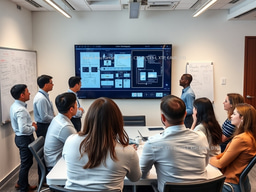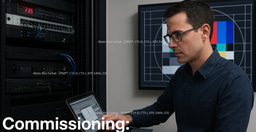The Impact of Virtual Reality (VR) Headsets on Audio-Video Industry

Virtual Reality (VR) headsets have not only revolutionized the entertainment industry but have also made a significant impact on the audio-video industry. With their immersive capabilities, VR headsets have transformed the way we consume and experience audio and video content.
a. Immersive Audio Experience:
VR headsets provide a unique opportunity for users to engage with audio content in a truly immersive way. Spatial audio technology integrated into VR headsets allows for realistic soundscapes, where audio sources are accurately positioned in a three-dimensional space. This immersive audio experience enhances storytelling, gaming, and cinematic experiences, transporting users into a world where sound surrounds them.
b. Virtual Concerts and Live Events:
VR headsets have opened up new avenues for experiencing live concerts and events. Through virtual reality, users can attend concerts and live performances from the comfort of their homes, feeling as if they are physically present in the venue. This not only expands access to live events but also offers interactive features such as choosing different camera angles and engaging with virtual environments, enhancing the overall concert experience.
c. Enhanced Video Viewing Experience:
VR headsets have revolutionized the way we watch videos, providing an enhanced viewing experience. Users can enjoy videos in a virtual theater setting, where the screen appears larger, creating a sense of immersion. Additionally, VR headsets enable users to watch 360-degree videos, allowing them to look around and explore the video environment, resulting in a more engaging and interactive video-watching experience.
d. Virtual Reality Filmmaking:
VR headsets have spurred innovation in the field of filmmaking. Filmmakers are exploring the possibilities of creating content specifically designed for virtual reality, where the viewer becomes an active participant in the story. VR films offer a unique narrative experience, where viewers can explore different perspectives and engage with the environment and characters, blurring the lines between traditional filmmaking and interactive storytelling.
e. Virtual Reality Broadcasting:
VR headsets have the potential to transform the broadcasting industry. With VR, viewers can be immersed in live events and sports matches as if they were physically present at the venue. Broadcasters can provide multiple camera perspectives, allowing users to choose their vantage point, creating a personalized viewing experience. VR broadcasting has the potential to revolutionize how we consume sports, news, and other live events.
f. Virtual Reality Advertising:
VR headsets present new opportunities for advertisers to engage with their target audience. Immersive advertisements can be created, where users are placed within a branded virtual environment. This allows for a more interactive and memorable advertising experience, where users can engage with products or services in a virtual space.
g. Virtual Reality Training and Simulation:
VR headsets have found applications in training and simulation within the audio-video industry. From audio production to video editing, VR can provide a simulated environment for professionals to practice their skills. This immersive training experience allows for realistic scenarios and hands-on learning, leading to improved proficiency and creativity in audio-video production.
h.Augmented Reality Integration:
The integration of augmented reality (AR) with VR headsets offers exciting possibilities for the audio-video industry. AR overlays virtual elements onto the real world, creating a mixed reality experience. This integration can enhance live performances by overlaying visual effects in real-time or provide additional information and context during video playback, enriching the viewing experience.
i.Accessibility and Inclusivity:
VR headsets have the potential to make audio-video content more accessible and inclusive. Individuals with visual impairments, for example, can experience audio-described content in a virtual environment. Additionally, VR can provide an immersive experience for individuals with limited mobility, offering them a way to engage with audio-video content beyond traditional means.
j.Future Innovations:
The impact of VR headsets on the audio-video industry is still evolving, and future innovations hold immense potential. Advancements in haptic feedback technology could further enhance the immersive audio-video experience, allowing users to feel physical sensations in conjunction with audio-visual content. Additionally, advancements in VR streaming technologies and resolution improvements will contribute to even more realistic and high-quality audio-video experiences.
By following AVIXA's website or AVIXA Xchange, everyone can stay informed about the latest trends, innovations, and developments in the field of AV and VR, ensuring they are up-to-date with the rapidly evolving landscape of the audio-video industry.
Finally, Virtual Reality headsets have had a significant impact on the audio-video industry, transforming the way we consume and experience audio and video content. From immersive audio experiences to virtual concerts, VR has opened up new opportunities for innovation, creativity, and audience engagement. As technology continues to evolve, we can expect further advancements and applications that will shape the future of the audio-video industry, offering exciting and immersive experiences to audiences worldwide.
-
Xchange Advocates are recognized AV/IT industry thought leaders and influencers. We invite you to connect with them and follow their activity across the community as they offer valuable insights and expertise while advocating for and building awareness of the AV industry.
Recommended Content
LetsTalkAVbyAlexis Series: Episode 4 : Design Begins With People: Engineering AV Systems Around Real End-User Requirements

LetsTalkAVbyAlexis Series : Episode 2: Network & AV Convergence (AVoIP)





Please sign in or register for FREE
If you are a registered user on AVIXA Xchange, please sign in